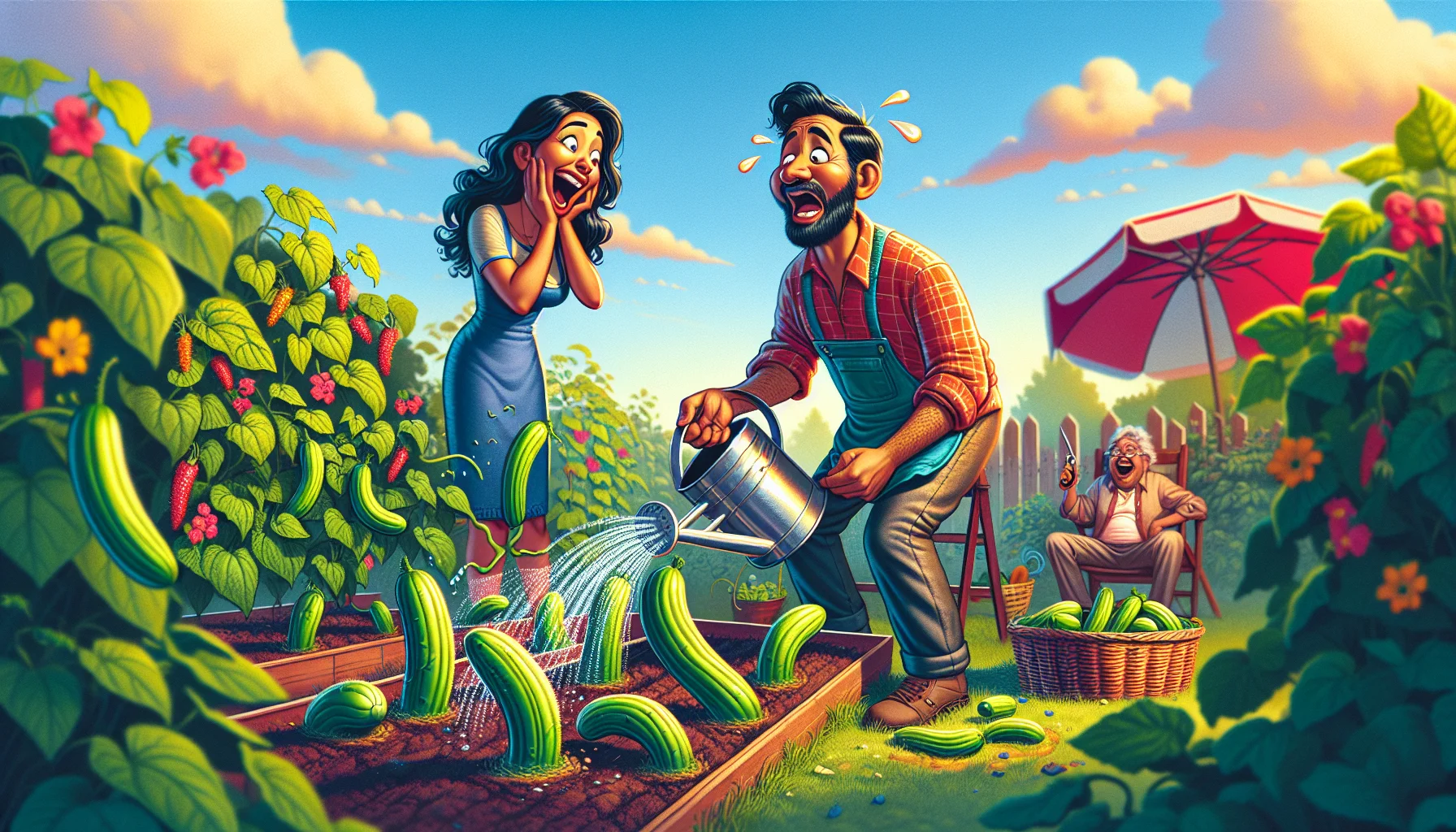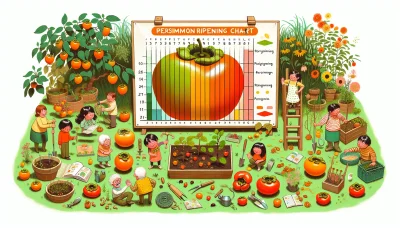Watering cucumbers Quiz
Test Your Knowledge
Question of
The Importance of Watering Cucumbers
Proper hydration is crucial for cucumber plants in a garden setting for several reasons. Cucumbers are made up of 95% water, which is key to their growth and development. Adequate watering helps in the transportation of nutrients from the soil to the plant, ensuring healthy growth and the production of crisp, flavorful cucumbers. Furthermore, consistent moisture levels are essential to prevent stress on the plants, which can lead to issues such as bitter fruit and uneven growth. Therefore, maintaining a regular watering schedule is essential for the success of cucumber plants in any garden.
Understanding Cucumber Water Needs
To effectively meet the water requirements of cucumber plants, it's essential to consider several key factors. The climate plays a significant role; in hotter, drier regions, cucumbers will need more frequent watering to stay hydrated and healthy. Soil type also influences watering needs. Sandy soils drain quickly and may require more frequent watering, whereas clay soils retain moisture longer and may not need to be watered as often. Additionally, the stage of plant growth impacts water needs. Young plants and those in the flowering or fruiting stages may require more water to support their development. By carefully considering these factors, gardeners can ensure their cucumber plants receive the right amount of water to thrive.
Best Practices for Watering Cucumbers
- Water early in the morning to reduce evaporation and allow leaves to dry out during the day, minimizing the risk of fungal diseases.
- Use a soaker hose or drip irrigation system to apply water directly to the soil and roots, avoiding wetting the foliage.
- Maintain consistent moisture levels by watering deeply and regularly, especially during dry spells, to encourage deep root growth.
- Check the soil moisture before watering by sticking your finger into the soil up to the second knuckle; water if the soil feels dry at that depth.
- Apply a layer of mulch around the plants to help retain soil moisture, regulate soil temperature, and reduce weed competition.
- Avoid overwatering, which can lead to root rot and other diseases. Cucumbers need about 1 inch of water per week, including rainfall.
- Adjust watering frequency and volume based on weather conditions, soil type, and plant size. Sandy soils dry out faster than clay soils and may require more frequent watering.
- Water the base of the plant rather than from above to minimize water waste and reduce the chances of leaf diseases.
- During hot, dry periods, consider watering more frequently to maintain adequate moisture levels in the soil.
- After fruit begins to form, ensure consistent watering to prevent misshapen or bitter fruits caused by uneven moisture levels.
Common Mistakes in Watering Cucumbers
Watering cucumbers seems straightforward, but many gardeners fall into common traps that can adversely affect the health and yield of their plants. Overwatering is a prevalent issue, leading to waterlogged soil and root rot, which stifles growth and can kill the plant. Conversely, underwatering, especially during hot weather, can stress plants, leading to bitter fruit and reduced production. Inconsistent watering practices can cause cucumbers to develop unevenly or become misshapen. Understanding the balance of when and how much to water is crucial for healthy, productive cucumber plants.
The Role of Mulching in Moisture Retention
Mulching plays a crucial role in retaining soil moisture, which is particularly beneficial for moisture-loving plants like cucumbers. By covering the soil surface around plants, mulch reduces water evaporation, keeping the soil moist for longer periods. This is especially important during hot or dry weather, ensuring cucumbers receive the consistent moisture they need for optimal growth. Organic mulches, such as straw, wood chips, or leaves, are best suited for cucumbers. These materials not only help in maintaining soil moisture but also gradually break down, adding valuable nutrients to the soil. Additionally, organic mulches encourage beneficial soil organisms, further enhancing soil health and moisture retention.
Irrigation Systems for Cucumbers
-
Drip Irrigation
Pros:
- Efficient water usage by delivering water directly to the plant's root zone.
- Reduces weed growth by limiting water to the plant's immediate vicinity.
- Decreases the risk of leaf diseases by keeping foliage dry.
Cons:
- Initial setup can be more expensive and complex.
- System components can clog if water is not properly filtered.
- Requires regular maintenance to ensure emitters are functioning correctly.
-
Soaker Hoses
Pros:
- Simple to install and use, making it ideal for small gardens or beginner gardeners.
- Efficient water use, similar to drip irrigation, by soaking the ground directly around the plants.
- Less expensive initial investment compared to drip systems.
Cons:
- Can be less precise than drip systems, potentially watering areas that don't need it.
- Soaker hoses can degrade over time from sun exposure.
- May require more frequent monitoring to adjust for proper soil moisture levels.
-
Sprinkler Systems
Pros:
- Can cover large areas evenly, making them suitable for big gardens.
- Automatable, which allows for easy scheduling of watering times.
- Versatile, as they can be used for lawns and garden beds alike.
Cons:
- Less water-efficient, as some water is lost to evaporation and runoff.
- Can promote leaf wetness, which may increase the risk of some diseases.
- Wind can affect the distribution of water, leading to uneven watering.
Monitoring and Adjusting Watering Schedules
| Growth Stage | Watering Frequency | Adjustments for Weather Conditions |
|---|---|---|
| Seedling | Once daily | Reduce to every other day in cloudy or cool weather |
| Vegetative Growth | Twice a week | Increase to three times a week in hot or windy conditions |
| Flowering and Fruit Setting | Every other day | Increase to daily during heat waves; reduce if rainy |
| Fruit Development | Three times a week | Adjust based on soil moisture; more frequent watering may be needed in dry conditions |












